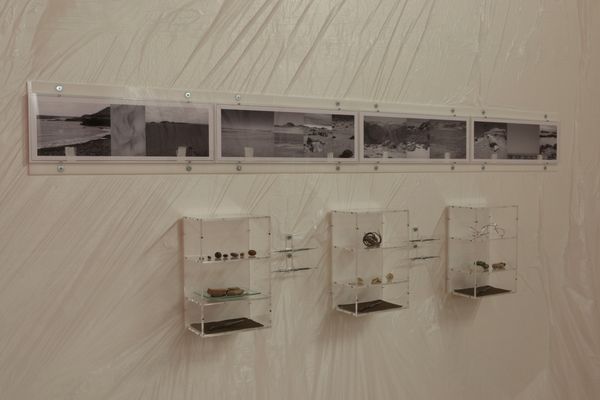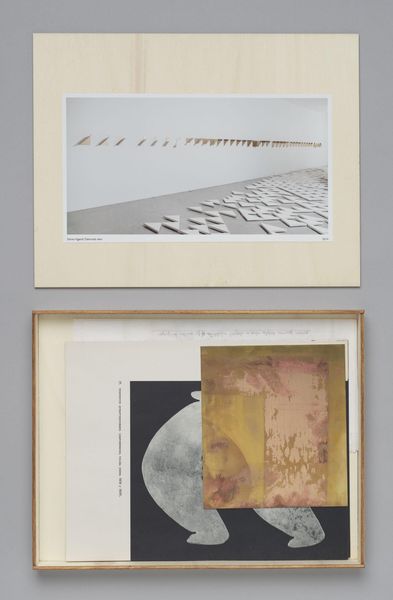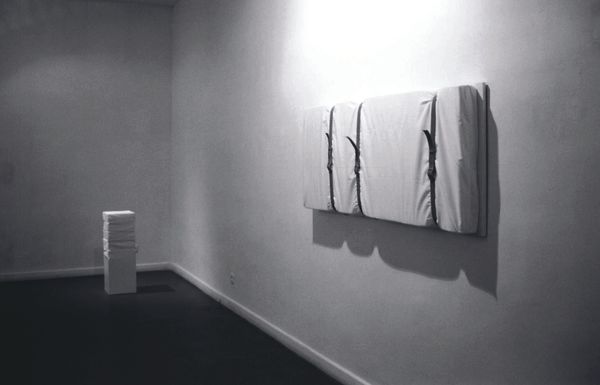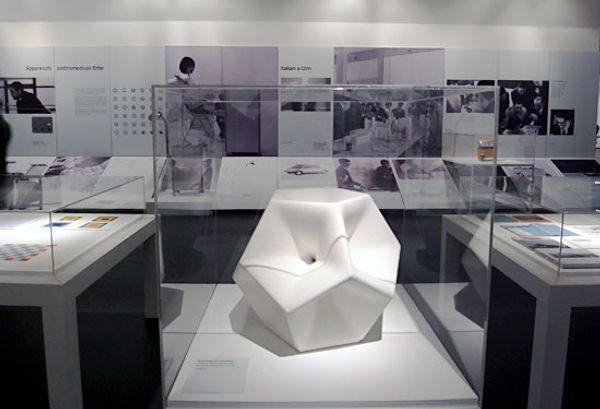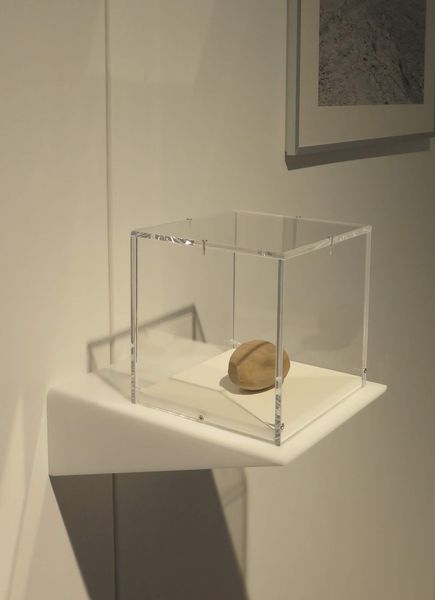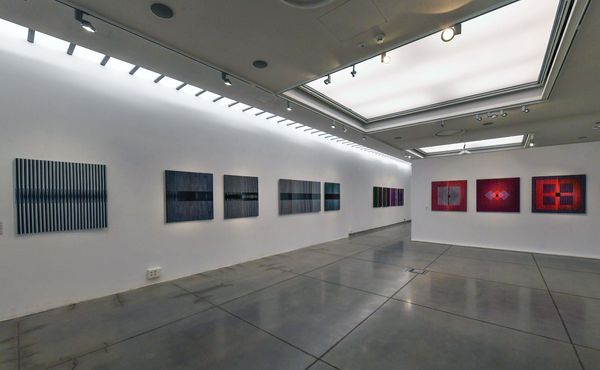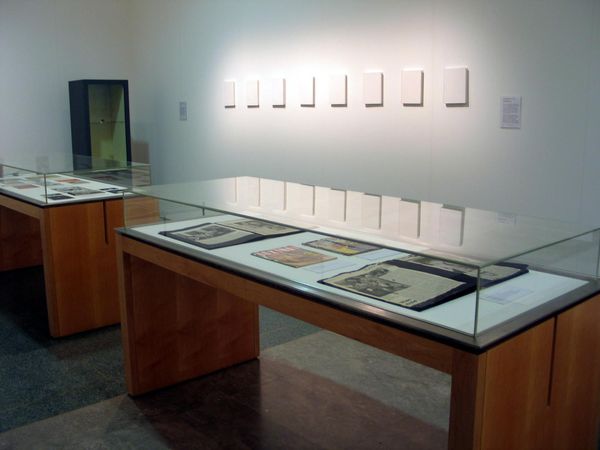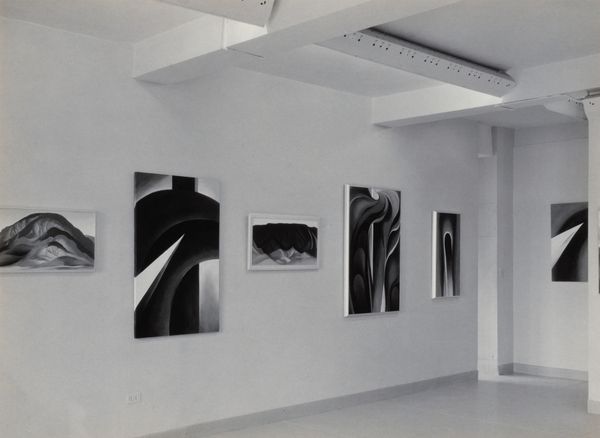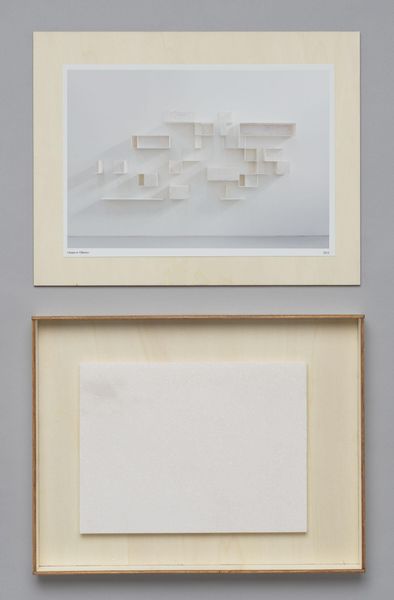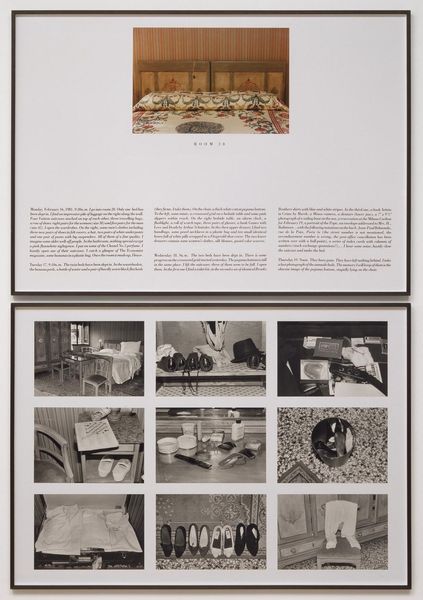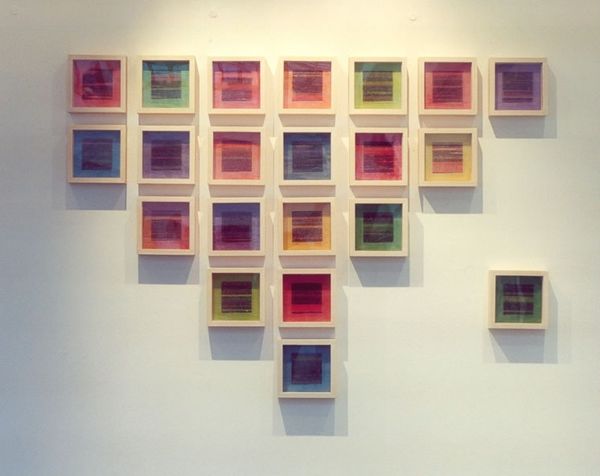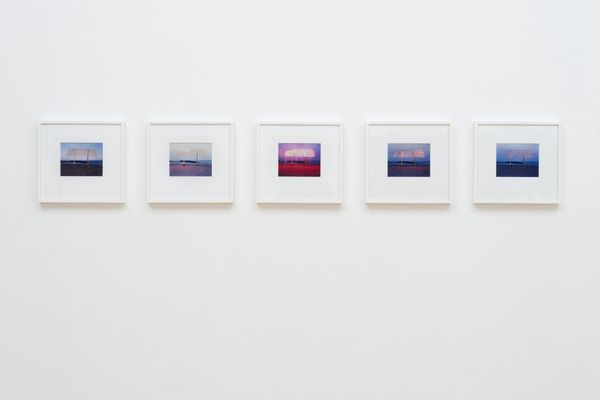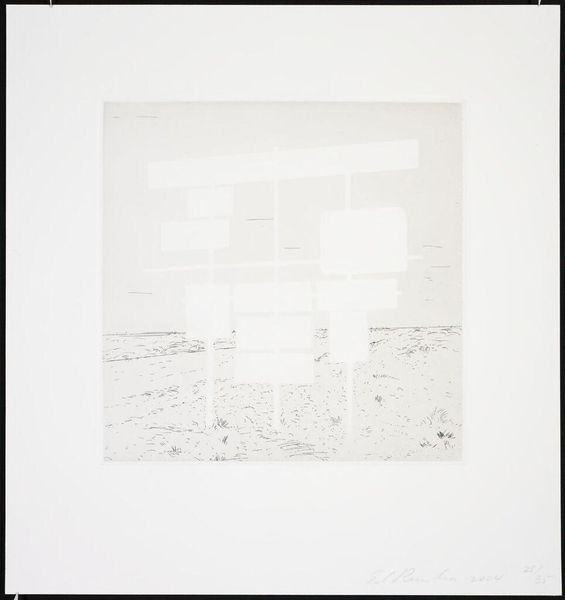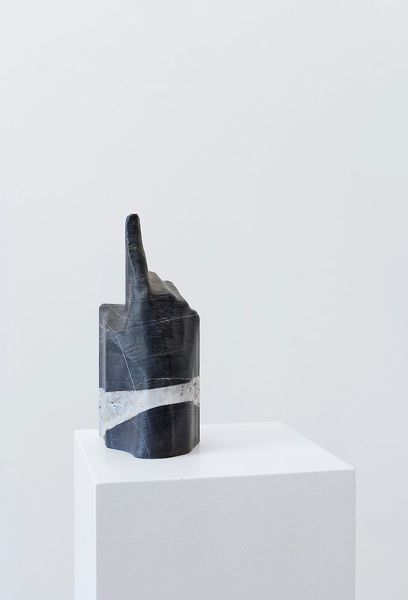
Copyright: www.guiadegrancanaria.org
Curator: We are looking at "Ciento cincuenta millones de años," which translates to "One Hundred Fifty Million Years," a mixed media installation piece from 2018 by Francis Naranjo. What strikes you first? Art Historian: It feels sparse, almost clinical. The monochromatic photographs and that little… rock? All meticulously arranged. I wonder what history or narrative connects those different objects. Curator: The interplay of textures, shapes, and tonal range in the mountain photographs sets up a rhythm across the white space of the wall. It's balanced yet not symmetrical, almost an equation waiting to be solved. What do you make of the presentation—the frames, the floating shelf? Art Historian: Everything's geared toward isolating and elevating each element, drawing attention to its supposed significance, almost turning them into historical specimens. I think Naranjo invites us to ponder our relationship with deep time. Is it an arrogant gesture to claim to understand a time scale of that magnitude? Curator: Time seems like one element in this assembly, one of several related concepts like depth, space and form that are also at play. These gray-scale images mimic and frame something ‘natural’ yet evoke a cold abstraction, something deeply conceptual rather than literal. Note the geometry in the lines; that single rock encapsulated almost seems precious when its surroundings deny warmth and tactility. Art Historian: Precisely. Its position creates a strange dialogue between geological and human timescales. The gallery space becomes a sort of secular temple, demanding reverence for this deep-time object. Curator: An altar perhaps, for geological inquiry? As such, the formal decisions underscore this reading with near-perfect arrangement. Every compositional detail emphasizes an internal dialogue between texture, hue, and object placement—ultimately the formal relationships eclipse questions of time and instead illuminate ideas of art and objecthood itself. Art Historian: The success for Naranjo in this lies not in illustrating the history of the world, but inviting conversations around how art institutions and exhibition-making can frame our understanding of that history. The piece leaves us thinking about who decides what is considered culturally valuable or worth exhibiting. Curator: A powerful arrangement for quiet consideration! Art Historian: Indeed, it sparks reflection about our place within ever shifting socio-political structures and timelines.
Comments
No comments
Be the first to comment and join the conversation on the ultimate creative platform.
